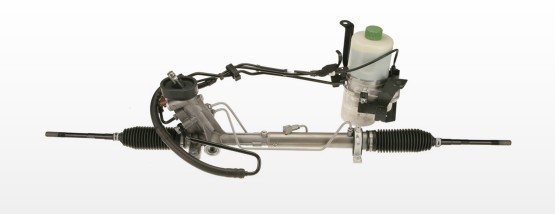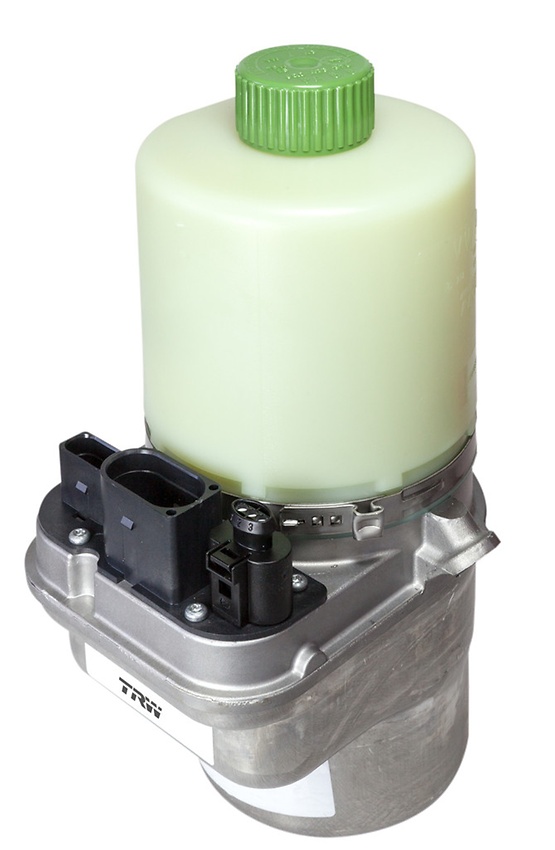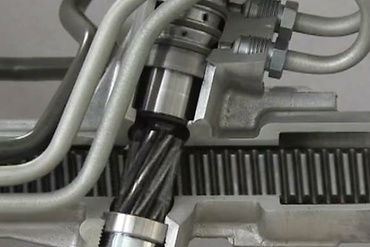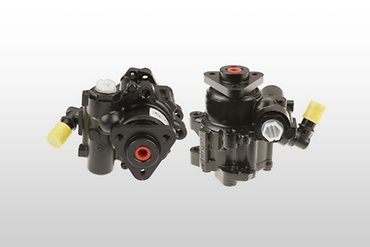Electrically powered hydraulic steering (EPHS) is an intermediate technology on the path to fully electric steering (EPS – electrically powered steering). This steering system is used in many large-volume models. More than ten million vehicles are currently equipped with this technology.
How-to-guide

A great advantage of EPHS compared to conventional hydraulic systems is that it requires no belt-driven steering pump. The motor pump unit combines an electric motor, a gear pump, a reservoir for the fluid and the associated control unit in one housing.
It is supplied by the vehicle electric system and therefore runs completely independently of the vehicle engine. Depending on the system, electro-hydraulic steering systems use up to 75 % less energy than hydraulic systems with V-belt and steering assist pump.

The motor pump unit permanently runs at a low speed to provide steering assist power without delay for steering actions. When a steering action occurs, it is adapted to the steering angle and steering speed taking into account the vehicle speed.

If loud noises occur during steering maneuvres, a clearly structured fault tracing procedure is particularly important because premature replacement of the motor pump unit is often very expensive and not a guarantee for success.
Our experience has shown that increased noise emission often only occurs after inexpert repairs on the steering system or suspension components.

The diagnosis should start with a detailed evaluation of the vehicle and the periphery. A certain level of noise emission, especially at the right and left end stops, is normal and only indicates that the limit of the steering range has been reached. If a shrill howling can be heard when the servo load changes, however, the problem could be in the close vicinity of the motor pump unit.

Check the power supply of the vehicle electric system. If the voltage is too low, the power consumption of the steering automatically increases, causing a higher noise emission which can be heard in the passenger compartment.

Oil temperature, oil condition, fill level and the steering electronics should also be checked. An improperly bled steering system also tends to be generate noise. Foaming oil can be attributed to insufficient bleeding.

Each steering action increases the speed of the motor pump unit in order to generate sufficient pressure for the steering assist. This results in a high pressure pulsation and vibration of the lines. The lines are therefore insulated with rubber and attached to the car body with special hose clamps.
Just one hose rubbing against part of the car body leads to increased noise emission. For this reason, repair work on such a system has to be carried out very carefully and thoroughly. A motor pump unit installed with tensions can also have this effect.

To absorb pressure pulsations and vibrations in such a steering system, special rubber-insulated lines are used for connecting the motor pump unit with the steering gearbox. The lines are designed to absorb the pressure pulsations.
The motor pump unit rests in a special bracket with rubber buffers. Inexpert handling or incorrect installation here can also result in excessive noise emission. For this reason, the supplied accessories such as rubber buffers and/or brackets should always be installed when working on an EPHS.
The following lists the individual test steps again:
- Check the vehicle power supply
- Check the hydraulic fluid (temperature, condition, fill level)
- Check placement of the lines
- Attachment of the motor pump uni
If this advice is followed, a successful repair on such a steering system should not present any problems.
Nice-to-know

ZF Aftermarket product range
Discover the complete portfolio of steering components in our product catalog.


